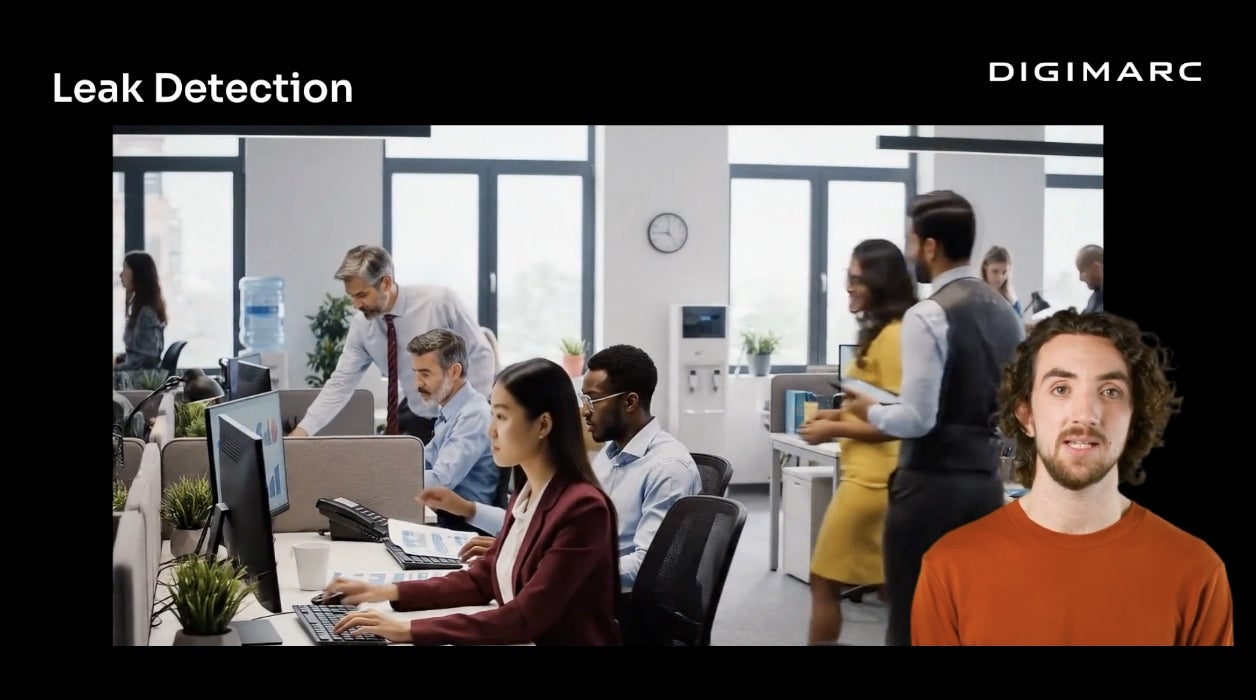Five years ago, we announced the release of the GS1 Digital Link standard, which promised to disrupt the consumer goods industry for the better by allowing products to be digitized at scale and transforming how brands and consumers interact. GS1 Digital Link upgrades the ubiquitous barcode used by over two million manufacturers on more than four trillion product items per year, so that every product can connect to the web, be smartphone interactive, and transact with point-of-sale systems – all with one code or tag on the product (QR code, NFC tag, digital watermark, etc.).
In this blog, we’ll look at the latest evolution of the Digital Link standard and reflect on five years of pilots and successful implementations. Our takeaway? Now is the time to connect every product item to the Web.
Please also join us on Wednesday, February 1 at 11 am ET/8 am PT for a webinar to learn more directly from the creators of the GS1 Digital Link standard. You can register for this free webinar, GS1 Digital Link: Preparing for the Product Digitization Boom. If you’d like to learn more about the Digital Link also consider downloading our GS1 Digital Link And Active Digital Identities whitepaper.
GS1 is the global standards organization responsible for the trillions of barcodes seen on the products we use every day. GS1 barcodes are scanned about 5 billion times a day – you most likely have observed or heard the “beep” as the products you purchase are scanned at checkout. While the barcode – also referred to as a UPC or EAN – has provided excellent service to supply chains across industries for 50 years, the barcode has two major shortcomings. Unlike QR codes or NFC tags, barcodes are not scannable nor readable by consumers via a smartphone without the use of a special app.
Prior to the GS1 Digital Link standard, a consumer’s mobile device would have no idea what to do with the series of numbers contained in a barcode (known as a GTIN). So, what changed? How do today’s consumers get authoritative content and services from a code?
The GS1 Digital Link standard resolved this issue by turning all the information contained in the 1D barcode (and more) into a Web address (a URL or Web URI). With GS1 Digital Link this information is natively encoded in a 2D code like a QR code or an NFC tag. This is game-changing because mobile phones, and literally every software client in the world, supports URLs and knows how to read them to access content.
Putting it all together, please meet a GS1 Digital Link Web URI:

With GS1 Digital Link, all of this information can be encoded in an on-pack QR code, like the code below (scan the QR code with the camera app on your smartphone):
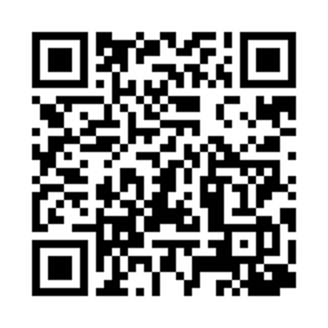
Once scanned by your smartphone camera app, the code redirects you to a Web experience chosen by the brand. Consumer goods brands are using the standard combined with digital twins and the product cloud to deliver personalized, dynamic experiences to consumers ranging from the provenance of the product, recycling instructions, authentication data, allergy information, rewards, and more.
Brands can choose to create static redirections or they can make them fully dynamic linked to the context (e.g., user profile, location, time) using Digimarc’s patented technology.
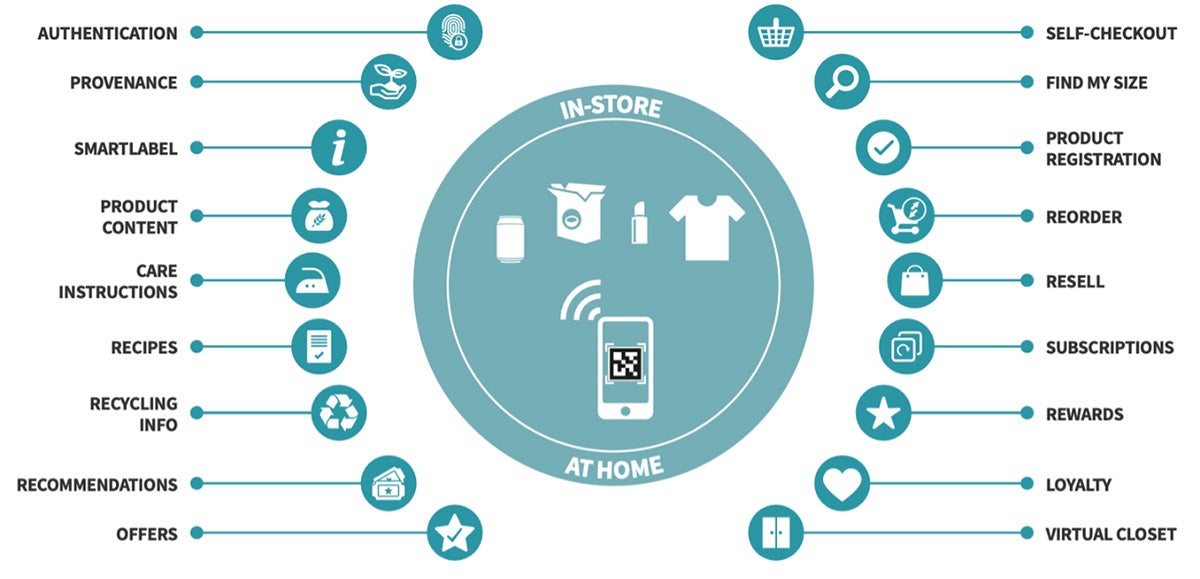
This allows consumer product brands to deliver relevant content directly to consumers via a single standards-based code serving multiple applications rather than individual proprietary codes for each application.
These concepts and more are summarized in the video below.
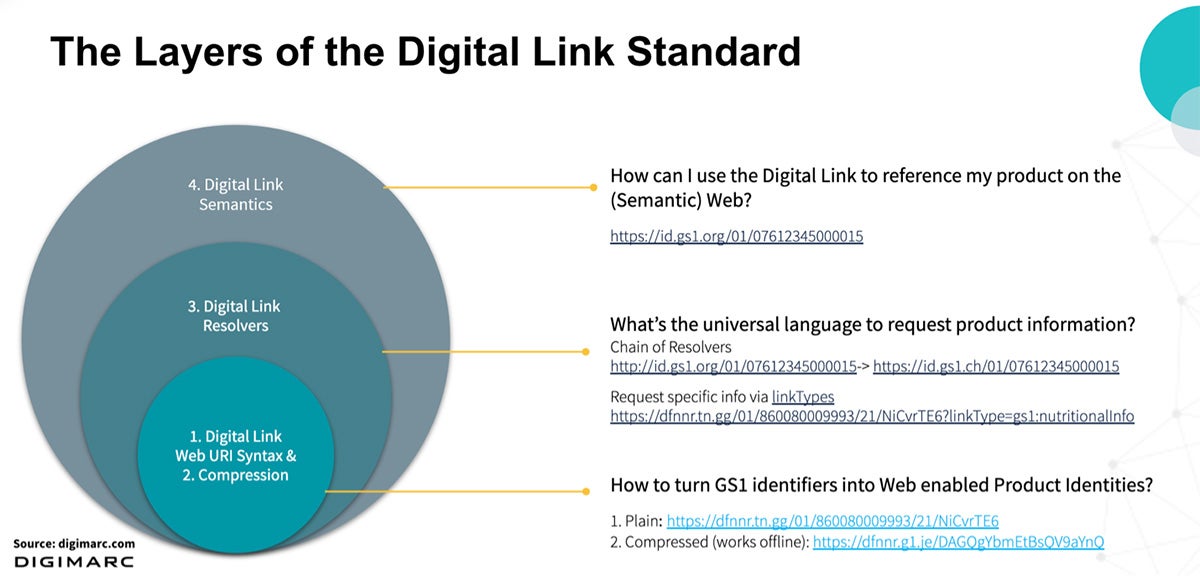
Several enhancements have been added to the standard since its initial release in 2018. For instance, the standard can now compress data to make URLs smaller for use cases with limited space. Why does this matter? An uncompressed GS1 Digital Link looks like this: https://dlnkd.tn.gg/01/9780345418913. With GS1 Digital Link compression, the link is transformed (shortened) to: https://dlnkd.tn.gg/ARHKVAdpQg. The difference in size (six characters) might not sound like a lot but it is enough to allow the compressed Digital Link carrier to be printed at significantly smaller sizes while still being decoded offline.
LinkTypes and the concept of Resolvers add an extra layer of functionality to GS1 Digital Link. For instance, an application to request very specific types of content for a product tagged with a Digital Link such as a health tracking application. With the link below, consumers can now request nutritional information for a Digital Link tagged product. Notice the linkType part of the URL which is the key to requesting specific information:
https://dfnnr.tn.gg/01/860080009993/21/NiCvrTE6?linkType=gs1:nutritionalInfo
The latest version of the standard (version 1.3) was released in November 2022 . This newest release improves usability of GS1 Digital Link by simplifying the Digital Link syntax by deprecating the use of alphanumeric Application Identifiers and enforcing numeric AIs (e.g., /gtin is no longer supported, /01 needs to be used instead).
The power of GS1 Digital Link doesn’t stop here. The standard also has the power to completely replace the well-known 1D barcode as more and more Point-of-Sale (POS) system manufacturers and supply chain partners begin to support the standard. Adoption has gained momentum over the past five years with consumer brands and governmental organizations and agencies setting ambitious goals. For example, with Sunrise 2027, GS1 US has set a 2027 deadline for the US retail industry to make the transition to adopting 2D barcodes at point-of-sale. Successful pilots have been performed with dozen of hardware vendors and retailers.
Similar initiatives have been undertaken around the world. For instance, we worked with GS1 Switzerland to provide all Swiss users of GS1 standards with out-of-the box access to Digital Links for their products.
Moreover, regulatory initiatives like, the EU Digital Product Passport that requires many consumer products to feature a unique and accessible Digital Identity to help consumers make greener choices, are accelerating adoption of the standard because it uniquely meets most of the early criteria mandated by the EU.
Pilot projects and full-scale rollouts have also been initiated. We had the chance to deploy the first mass-scale implementation of GS1 Digital Link with MOWI, the leading provider of Atlantic salmon. Our technology combined with GS1 Digital Link provides MOWI’s customers with unprecedented transparency and product traceability from the farm to retail to the consumer. More recently we partnered with the Australian Table Grape Association (ATGA) to add GS1 Digital Link to packs of Australian table grapes to deliver traceability and authentication data.
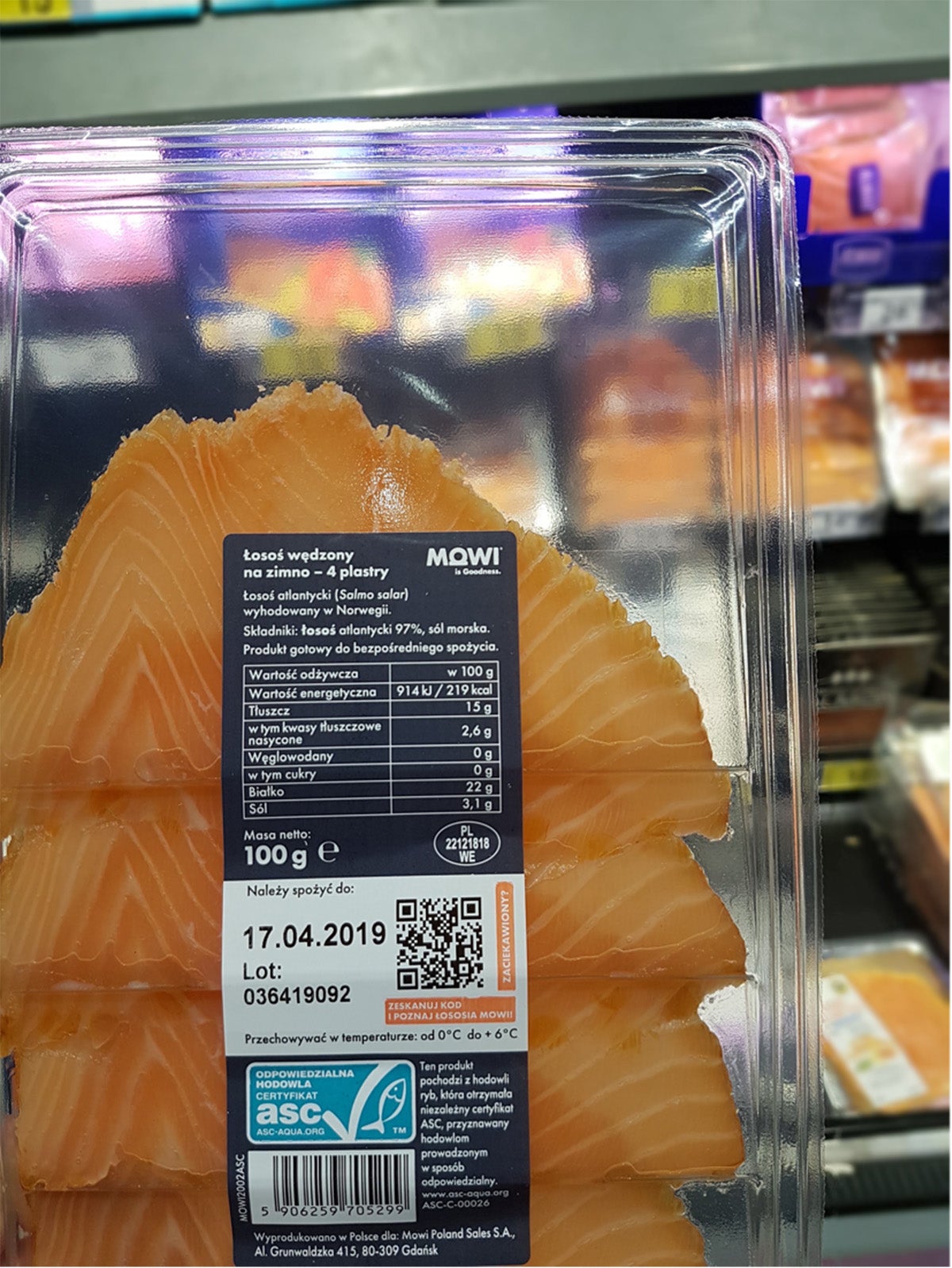
GS1 Digital Link is an ambitious upgrade of the GS1 system of standards, ultimately the aim of Digital Link is to make product codes Web and consumer ready. GS1 Digital Link does this by replacing 1D barcodes, containing an EAN or UPC code, with a 2D codes containing a Web address. This is no small task and industry-wide adoption will take time. But pilot projects are happening all around the globe; large scale adoption is underway.
The new GS1 Digital Link standard works with a 2D barcode (e.g., QR code) on product packaging or labels. Other types of tags such as NFC tags can also support the GS1 Digital Link standard. Now, every product can have its own digital identity and Web address, with the new ability to support smartphone interaction, supply chain tracking, product authentication and many other applications. For instance, Digimarc Engage, in combination with GS1 Digital Link, makes it possible for any product to deliver dynamic digital services directly to consumers based on scan context, and to gather and apply data intelligence for brands, manufacturers and retailers at unprecedented scale.
Combining simplicity with direct actionability and consumer reach we believe that the GS1 Digital Link is a game changing standard. And we are at an exciting inflection point in the industry. Major brands are realizing the enormous business value of product digitization with GS1 Digital Link facilitating the digitization of products at mass scale. Now is the time to act.
